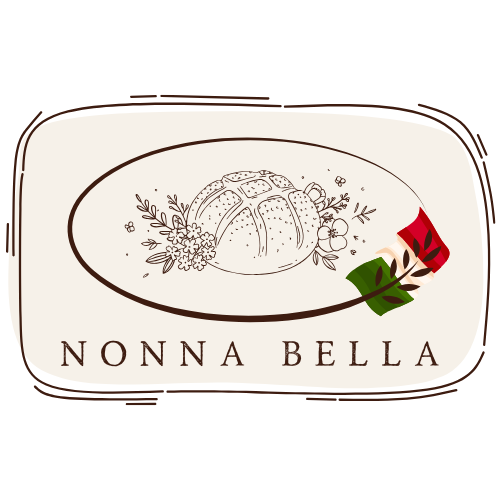
Deep Dive into Sourdough Fermentation: Health Benefits Explained
Welcome to the core of "My sourdough life," where the humble practice of sourdough fermentation transforms into a celebration of health and culinary excellence. Whether you're a seasoned baker or a curious novice, understanding the health benefits of sourdough fermentation can profoundly enhance your baking journey. And for those enthusiastic home bakers, Italian Sourdough is your go-to source for authentic artisan recipes and expert tips.
What is Sourdough Fermentation?
The essence of sourdough fermentation lies in its unique natural leavening process, which involves a sourdough starter. Unlike regular bread, sourdough bread utilizes wild yeast fermentation, allowing natural yeasts and lactic acid bacteria to work in harmony. These organisms ferment the carbohydrates in the flour, releasing carbon dioxide that acts as a natural leavening agent.
The Health Benefits of Sourdough Fermentation
1. Enhanced Nutrient Absorption
Sourdough fermentation improves the bioavailability of minerals. Enzymatic activities break down phytic acid, an anti-nutrient found in grains, which can bind minerals and reduce absorption. This natural process significantly enhances the availability of minerals like magnesium, iron, and zinc, crucial for our well-being.
2. Better Digestibility
This method predigests starches, making it easier for your body to handle. The long fermentation process breaks down gluten proteins, which can be beneficial for individuals who are sensitive to gluten.
3. Improved Blood Sugar Control
For those considering sourdough for diabetics, it can be a sensible choice. The slow fermentation results in bread with a low glycemic index, meaning it releases sugar slowly into the bloodstream, avoiding spikes.
4. Rich in Probiotics
Although the baking process kills many probiotic bacteria, the benefits they impart through fermentation continue to promote gut health. The prebiotic fibers remain that encourage the growth of healthy gut bacteria.
5. Enhanced Flavor
Aside from health benefits, the flavor profile offered by sourdough bread is unmatched. Notes of tanginess and rich textures are crafted through fermentation, resulting in the quintessential flavor of artisan bread.
## Sourdough Starter Maintenance and Troubleshooting
How to Feed Sourdough Starter
Maintaining a sourdough starter is pivotal for successful baking. Understanding how to feed sourdough starter involves consistent feeding to keep the wild yeast active.
Follow a simple schedule: equal parts (by weight) of starter, flour, and water. Regular feeding, ideally on a sourdough starter feeding schedule, ensures vibrant activity levels required for baking.
How to Store Sourdough Starter
For those not baking daily, knowing how to store sourdough starter effectively is crucial. Refrigeration slows the fermentation process without halting it, allowing less frequent feeding.
Sourdough Starter Troubleshooting
Common challenges include sluggish starter, off-colors, or funky odors. Addressing these issues involves adjusting the feeding time or environmental conditions, like temperature. Moreover, sourdough starter vs yeast provides insights into the unpredictable nature of yeast fermentation compared to commercial yeast.
Sourdough Bread Baking Basics
How to Bake Sourdough Bread
Crafting an easy sourdough bread begins with an active starter. Gradually incorporate water, flour, and salt. After mixing, allow the dough to ferment, then move on to shaping and second fermentation.
How to Shape Sourdough Bread
Various shaping techniques affect crumb structure: for beginner tips, fold the dough into a loaf, allowing it to proof in a banneton or fermentation basket for a rustic appearance.
Best Sourdough Scoring Techniques
Scoring is essential to control expansion and create artisanal patterns. Use a sharp blade or lame for clean incisions, facilitating the release of steam for a volumized loaf.
How to Get a Crispy Sourdough Crust
Achieving a crispy crust entails steam during the initial baking phase. Consider using the Bake an Artisan Bread Masterpiece: 5.5 Quart Red Le Creuset Dutch Oven to trap steam, ensuring a crunchy, golden exterior.
Artisan Bread and Beyond
Italian Sourdough Bread
A quintessential offering in your baking repertoire, Italian sourdough bread epitomizes simplicity with its combination of high-quality flour, water, and refined baking techniques.
Sourdough Bagels and Pizza Dough
The versatility of sourdough extends to sourdough pizza dough and bagels, enhancing flavor profiles with fermentation's distinct tang and chewy textures. Experiment with these forms to enlarge your homemade sourdough collection.
Essential Tools for Sourdough Baking
Equipping your kitchen with the right tools enhances results and eases the baking process:
- Oval/Round Bread Rattan Fermentation Basket for shaped and proofed perfection.
- The Nonna Bella Carbon Steel Bread & Loaf Pans aids consistent baking, while its nonstick surface ensures easy loaf release.
For adventurous bakers, explore these must-have implements to elevate your sourdough journey.
Sourdough Discard Recipes
Make the most of your sourdough starter with discard recipes. From pancakes to muffins, these recipes impart a nuanced tang, preventing waste while maximizing flavor.
Conclusion
Whether you're diving into the health benefits of sourdough or perfecting your homemade sourdough technique, sourdough baking tips foster both educational and rewarding experiences. Engage with the authentic flavors, textures, and nutritional advantages as you embark on your sourdough journey.
For more detailed guidance, expert recommendations, or to find the best baking tools and products, visit Italian Sourdough today.
